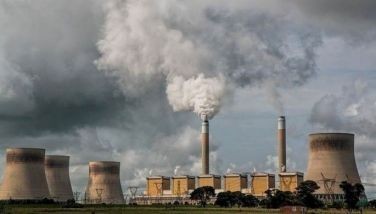Local cement now exceeds government standards
April 4, 2003 | 12:00am
Thanks to investments in technology, application of international best practices and government‘s supportive role, cement produced by major companies now exceed internationally-set and government standard for compressive strength.
The cement industry’s average compressive strength, which is the ability of a material to withstand compressive (squeezing) loads without being crushed when the material is in compression, now stands at 37.0 MPz (megapascals) and with a high 43 MPa against 33.8MPas in 1997. The Bureau of Product Standards (BPS) standard is 27.6 MPa, which reflects the international norm.
Philippine Cement Manufacturing Corp. (Philcemcor) president Felix Enrico R. Alfiler said the drive to be competitive has not only led to constant product improvements, it has also boosted efficiencies of cement plants to very significant levels.
He also cited the leadership of Trade and Industry Secretary Manuel Roxas II for "having created the right impetus, the right policy mix and balance that has stressed the importance of quality to local and global competitiveness."
"Based on individual reports submitted by the plants to Philcemcor, the average reduction in energy and power consumption per bag was five percent," Alfiler said.
Power and fuel comprise about 50 percent of costs of production. Since power and fuel costs in the country are among the highest in Asia, cement plants are constantly looking for innovative solutions to bring down costs.
Alfiler, however, said that cement companies are very much equipped to raise the current levels of compressive strength adopted for several types of high rise structures. "This is the outcome of the stress companies had put on investments on modernization and competitiveness-enhancing measures, he added.
The cement industry’s average compressive strength, which is the ability of a material to withstand compressive (squeezing) loads without being crushed when the material is in compression, now stands at 37.0 MPz (megapascals) and with a high 43 MPa against 33.8MPas in 1997. The Bureau of Product Standards (BPS) standard is 27.6 MPa, which reflects the international norm.
Philippine Cement Manufacturing Corp. (Philcemcor) president Felix Enrico R. Alfiler said the drive to be competitive has not only led to constant product improvements, it has also boosted efficiencies of cement plants to very significant levels.
He also cited the leadership of Trade and Industry Secretary Manuel Roxas II for "having created the right impetus, the right policy mix and balance that has stressed the importance of quality to local and global competitiveness."
"Based on individual reports submitted by the plants to Philcemcor, the average reduction in energy and power consumption per bag was five percent," Alfiler said.
Power and fuel comprise about 50 percent of costs of production. Since power and fuel costs in the country are among the highest in Asia, cement plants are constantly looking for innovative solutions to bring down costs.
Alfiler, however, said that cement companies are very much equipped to raise the current levels of compressive strength adopted for several types of high rise structures. "This is the outcome of the stress companies had put on investments on modernization and competitiveness-enhancing measures, he added.
BrandSpace Articles
<
>
- Latest
- Trending
Trending
Latest
Trending
Latest
Recommended





























